The Hidden Cost Ahead: How API Shifts and Tariffs Will Reshape Pharmaceutical Imports in 2026
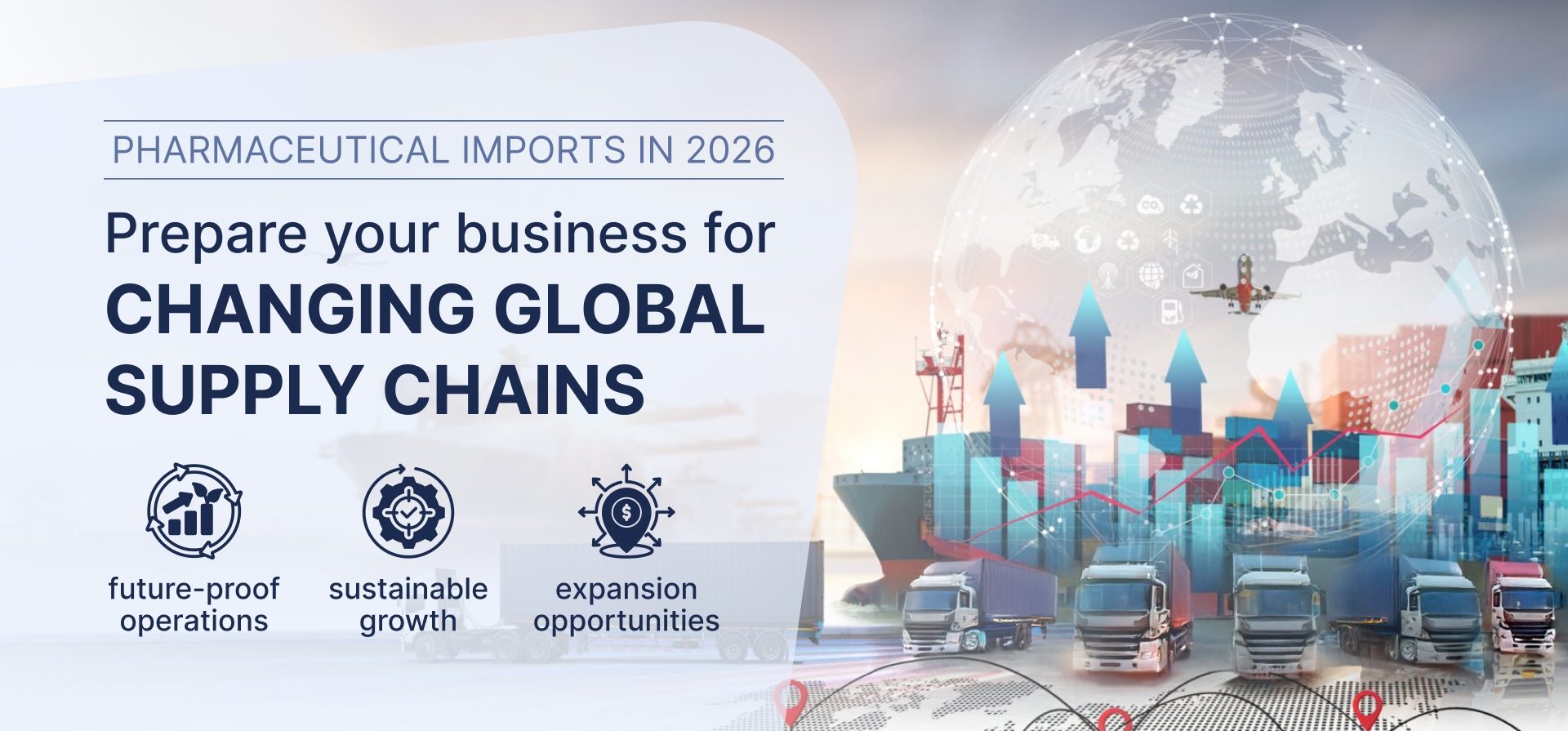

Contents Overview
Price Compression Signals: Risks for Pharmaceutical Distributors

In 2024 and early 2025, some markets saw price reductions across selected generic pharmaceuticals, but for pharmaceutical distributors, this short-term price compression masks longer-term risk and volatility. According to Intercept Health’s 2024 Drug Trend Report, this was largely due to temporary oversupply caused by post-pandemic production normalization and strategic undercutting from pharmaceutical manufacturers seeking to gain or defend market share. But this price compression is not sustainable. Margins for pharmaceutical manufacturers are tightening. Raw material availability is shifting. And geopolitical pressures are forcing countries to re-evaluate their dependency on certain suppliers. In fact, the global generic drugs market is forecast to grow from USD 445 billion in 2024 to USD 728 billion by 2034, underscoring both the scale of opportunity and the volatility distributors must prepare for.
Tariffs and Trade Barriers: What’s Changing in 2026
Global trade uncertainty continues to affect pharmaceutical distributors, even as the U.S. and China recently extended their trade truce for another 90 days. Originally, both countries had threatened massive tariff hikes—up to 145% on Chinese goods entering the U.S. and 125% on American exports to China—but the current agreement maintains Chinese imports at 30% and U.S. goods at 10%. While this extension avoids immediate disruption, tariffs at these levels continue to influence API costs, finished product pricing, and pharmaceutical distributors' margins worldwide.
Even with the temporary truce, pharmaceutical importers must plan for continued volatility. Higher base tariffs, coupled with supply chain dependencies and geopolitical pressures, mean that landed costs remain elevated and inventory strategies must be adjusted. Distributors who proactively evaluate sourcing alternatives, hedge tariff risk, and work with compliant, flexible manufacturing partners will be better positioned to maintain competitive pricing and ensure continuity of supply in 2026.
Global API Shifts: From China to “Anywhere Else”
The pharmaceutical industry has long relied heavily on China for Active Pharmaceutical Ingredient (API) manufacturing. In recent years, geopolitical tensions, trade uncertainty, and the need for supply chain resilience have driven a strategic diversification toward alternative production hubs, including India, Vietnam, Eastern Europe, and Latin America. While this diversification is essential to reduce dependency, it introduces new risks for distributors who must navigate evolving supplier networks.
China's Dominance and Emerging Alternatives
- China: China accounts for approximately 35% of global API production and remains the dominant supplier due to its low production costs, mature infrastructure, and established regulatory processes. It is the world’s largest exporter of bulk APIs.
- India: Accounts for 20% of global generic API supply by volume but only 8% by value, reflecting a focus on high-volume, low-margin APIs.
- United States: While the U.S. leads in pharmaceutical innovation and novel drug development, it is now ramping up domestic API production under strategic initiatives—some of which began during the Trump administration to reduce foreign dependency. Pharmaceutical companies that can strategically leverage China’s scale and cost advantages alongside the U.S.’s innovation and regulatory strength will be best positioned for growth.
- EU & Latin America: EU share declined from 42% in 2000 to 7% in 2021, while Latin America’s API market was USD 30.43M in 2024 and is expected to grow at 20.05% CAGR through 2033.
These Shifts Introduce Challenges for Distributors
- Instability in Pricing and Lead Times: Transitioning suppliers can create fluctuations in cost and delivery schedules.
- Formulation Documentation Updates: New suppliers may require regulatory review, affecting registration timelines.
- Variation in Quality Control: Differences in manufacturing standards can impact product consistency.
- Regulatory Re-Approval Requirements: Some markets may require new approvals for products sourced from alternative facilities.
For pharmaceutical importers, this means more risk in their portfolio than ever before. They may unknowingly be sourcing from newly transitioned facilities, affecting product continuity and compliance.
Direct Impacts on Pharmaceutical Distributors
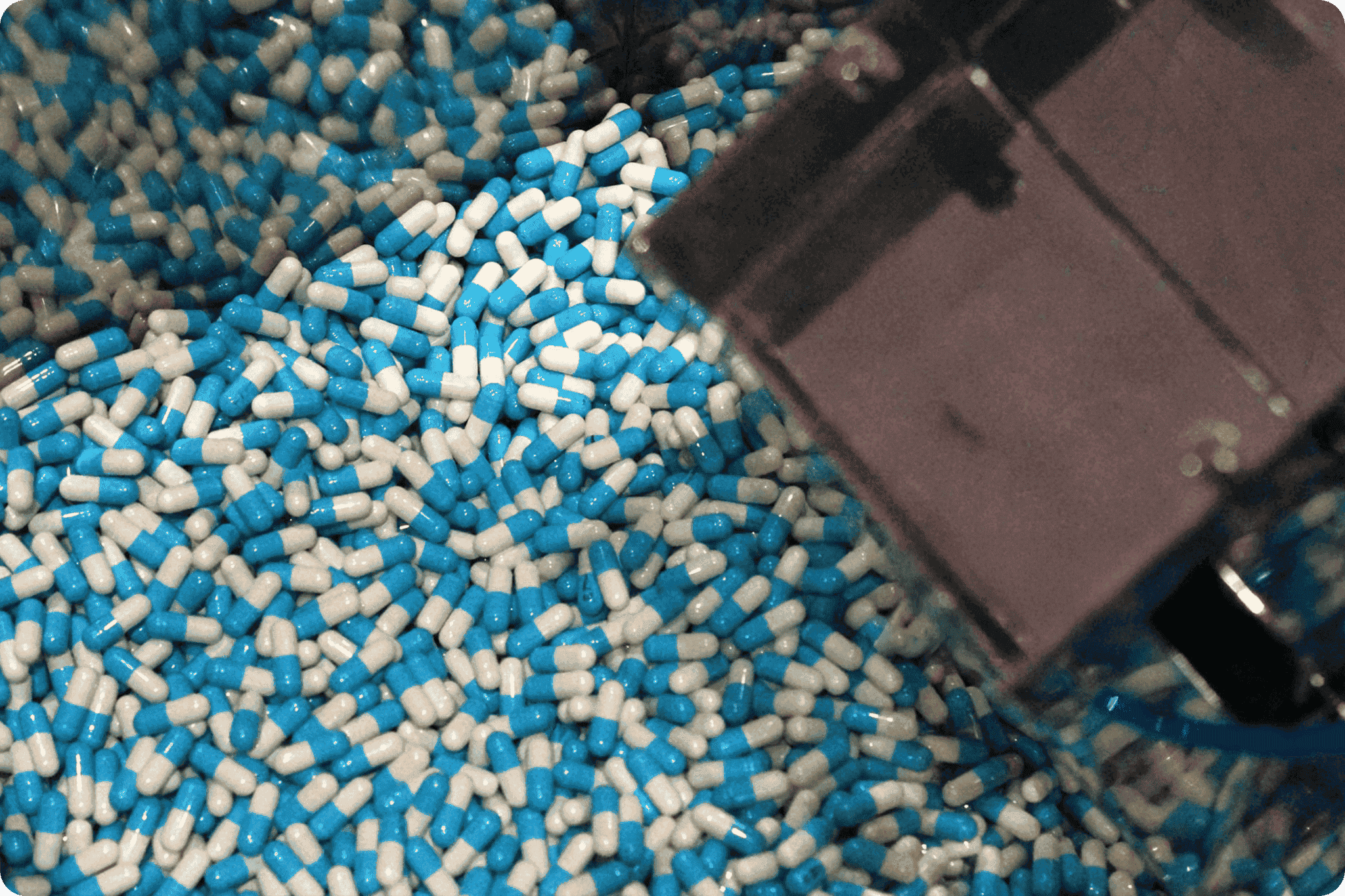
Importers and pharmaceutical distributors, particularly in developing markets, are feeling these pressures acutely. Higher landed costs, driven by tariffs, fuel surcharges, and third-party inspections, squeeze margins, while registration delays from new API sources slow market access. Supply chains are increasingly unpredictable as suppliers relocate or adjust production schedules, creating operational challenges in inventory and fulfillment.
Markets across the Middle East, Africa, and Southeast Asia are already experiencing delayed shipments, cost spikes, and supply disruptions, with projections indicating ongoing strain into 2026. Margin compression is amplified in regions with government tenders or strict retail pricing controls, highlighting the importance of proactive risk management. Distributors who evaluate sourcing strategies, diversify suppliers, and partner with regulatory-ready manufacturers are better positioned to maintain supply continuity, protect margins, and safeguard customer trust in an evolving global API landscape.
What Pharmaceutical Distributors Should Do Now

Proactive pharmaceutical distributors have an opportunity to turn market volatility into a strategic advantage. By anticipating disruptions in API supply, tariffs, and regulatory shifts, distributors can protect margins, maintain customer trust, and secure consistent product availability.
- Conduct a Supplier Risk Audit: Map out all suppliers, evaluate redundancy, and identify risk and pain points. Discuss with suppliers your concerns and request solutions from their side.
- Request Advanced Pricing & Production Forecasts: Work with manufacturers to understand potential API cost fluctuations and production timelines, enabling better financial planning and inventory management.
- Diversify Your Portfolio: Expand SKUs across therapeutic classes and dosage forms to minimize risk exposure and capture new market opportunities.
- Prioritize Regulatory-Ready Partners: Collaborate with manufacturers that can rapidly update dossiers and meet market-specific compliance requirements, reducing delays in registration and product launch.
- Invest in Supply Chain Visibility: Utilize digital tracking tools and logistics partnerships to monitor shipments, anticipate bottlenecks, and respond swiftly to disruptions.
By implementing these forward-looking strategies, distributors can safeguard their supply chains, strengthen relationships with key buyers, and position themselves for long-term growth, even amid global uncertainty in pharmaceutical imports and API sourcing.
Why Partner with AdvaCare Pharma
Why Strategic Distributors Choose AdvaCare Pharma as Their 2026–2027 Supplier
By partnering with AdvaCare Pharma, distributors gain more than access to high-quality pharmaceuticals; they gain a trusted, globally experienced partner that simplifies compliance, mitigates risk, and enables expansion in both established and emerging markets.
Key advantages for forward-looking distributors include:



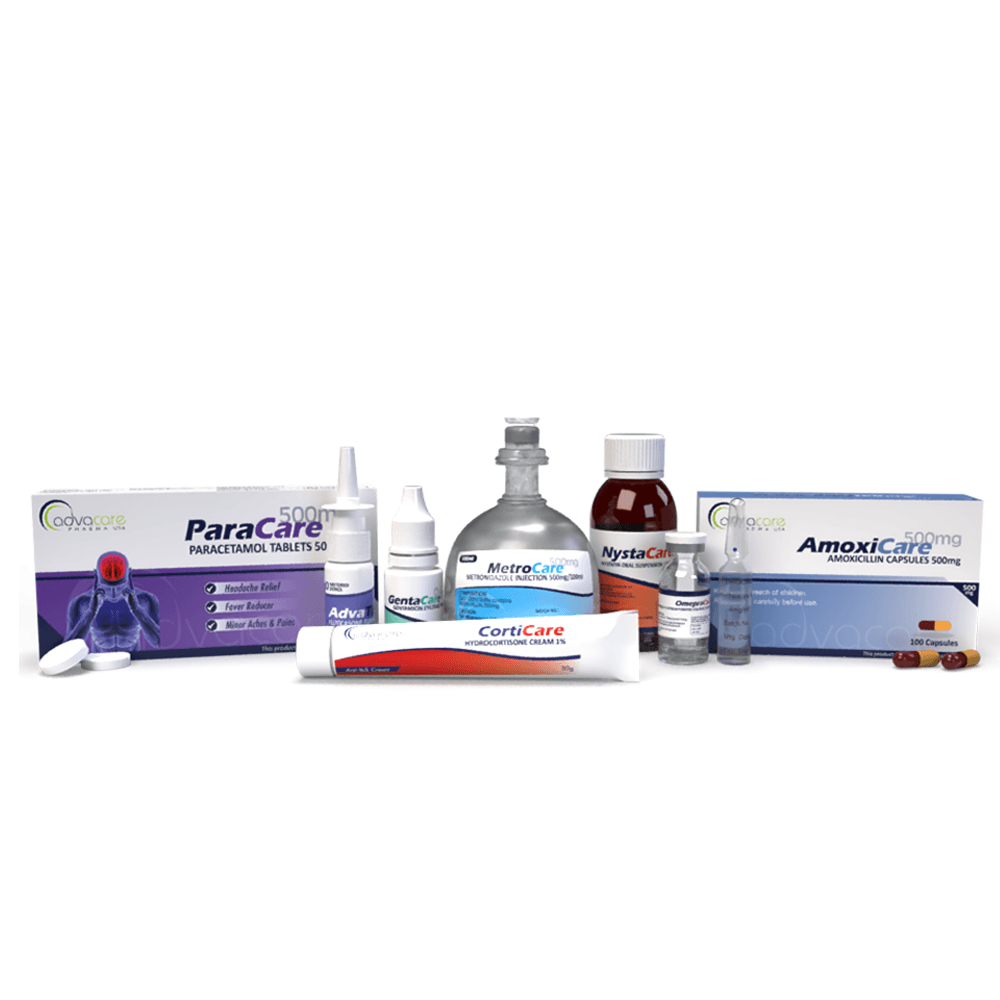




Global Expertise Supporting Distributor Success
AdvaCare Pharma equips distributors with the tools, expertise, and portfolio needed to succeed in a complex and volatile pharmaceutical landscape. With a presence in over 65 countries, we bring unparalleled knowledge of both highly regulated and emerging markets, helping distributors navigate challenges wherever they operate.
Ready-to-Register Documentation
Every product comes with complete, professional dossiers and market-ready documentation, streamlining registration and reducing regulatory delays.
Comprehensive Portfolio
Access over 500 pharmaceutical treatments spanning 13 dosage forms across 23 therapeutic classes, giving distributors the flexibility to diversify offerings and meet varied market demand
Certified Manufacturing Facilities
Expert Registration and Compliance Support
Our dedicated teams handle regulatory paperwork at every step, allowing distributors to focus on market growth and business strategy rather than administrative burdens.
Stable, Predictable Pricing
Pricing is designed for long-term partnerships, helping distributors plan confidently without unexpected cost spikes.
Operational & Marketing Support
From supply chain guidance to marketing materials, distributors receive practical support to strengthen market presence and drive growth.
By partnering with AdvaCare Pharma, distributors gain more than access to high-quality pharmaceuticals; they gain a trusted, globally experienced partner that simplifies compliance, mitigates risk, and enables expansion in both established and emerging markets.
Future-Proof Your Distribution Strategy for 2026
2026 will demand foresight, not reaction. Pharmaceutical distributors who act now can protect margins, safeguard supply chains, and strengthen customer trust through consistent product availability, regulatory compliance, and transparent pricing.
At AdvaCare Pharma, we partner with distributors to future-proof operations and drive sustainable growth amid global volatility. With our expertise, regulatory support, and diverse portfolio, your business can confidently navigate market shifts while seizing new expansion opportunities.
Interested in reducing your supplier risk for 2026 and beyond? Contact us today to discuss how AdvaCare Pharma can help secure your future.
Intercept Health (2024): Drug Trend Report (Q1-Q2 2024) Global Newswire (2025): Generic Drugs Market Size Worth $728.64 Bn by 2034 | Driven by Affordability, Patent Expirations, and Government Support DrugPatentWatch (2025) The Role of China in the Global Generic Drug API Market DrugPatentWatch (2025) India’s Growing Importance in Generic Drug API Manufacturing BBC (2025): US and China extend trade truce to avoid tariffs hike Chemanalyst (2024): China’s API Dominance Reshapes Global Pharmaceutical Supply Chain Drug PatentWatch (2025): India’s Growing Importance in Generic Drug API Manufacturing TechSci Research (2025): Vietnam Active Pharmaceutical Ingredients Market Size 2030 Quality Matters (2025): Global manufacturing capacity for active pharmaceutical ingredients remains concentrated Market Data Forecast (2025): Latin America Active Pharmaceutical Ingredients Market
Don't want to miss the next AdvaCare article?

Recommended Content
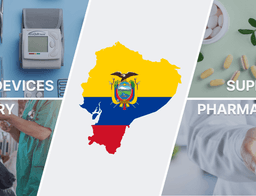
Ecuador: Importing Medicines with an International Pharmaceutical Manufacturer

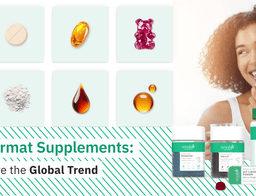
How Distributors Can Win With Multi-Format Supplement Portfolios Aligned to Global Trends


Why Distributors Can’t Afford to Miss the Collagen & Beauty Supplements Boom in 2026
